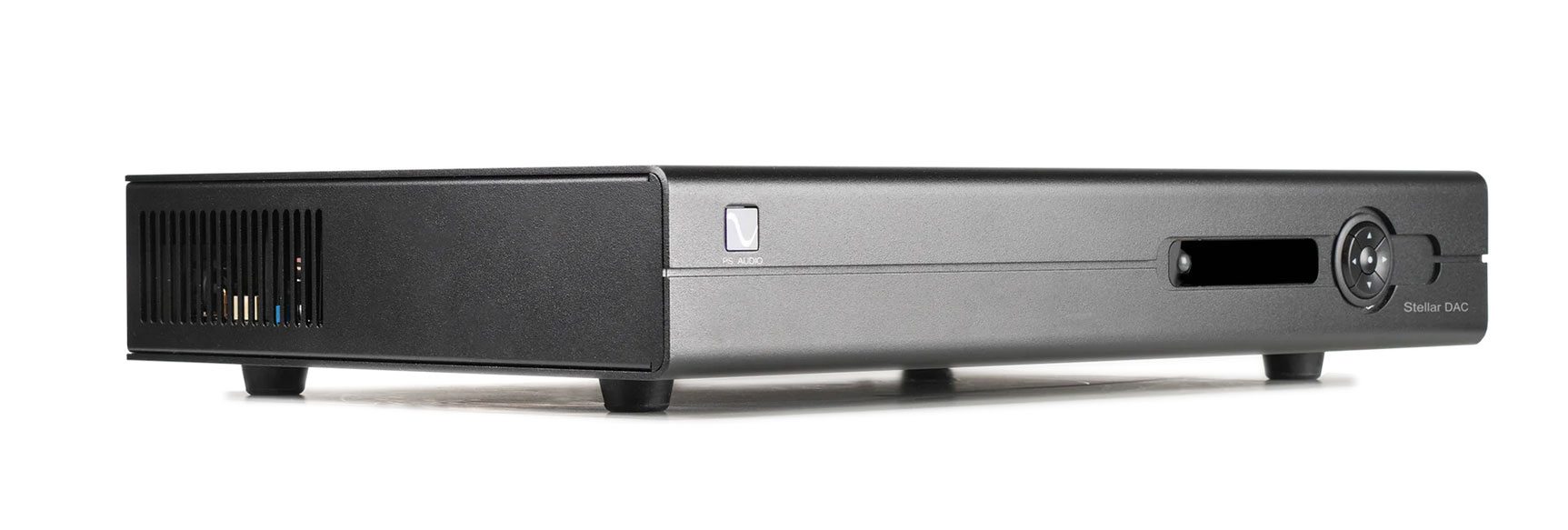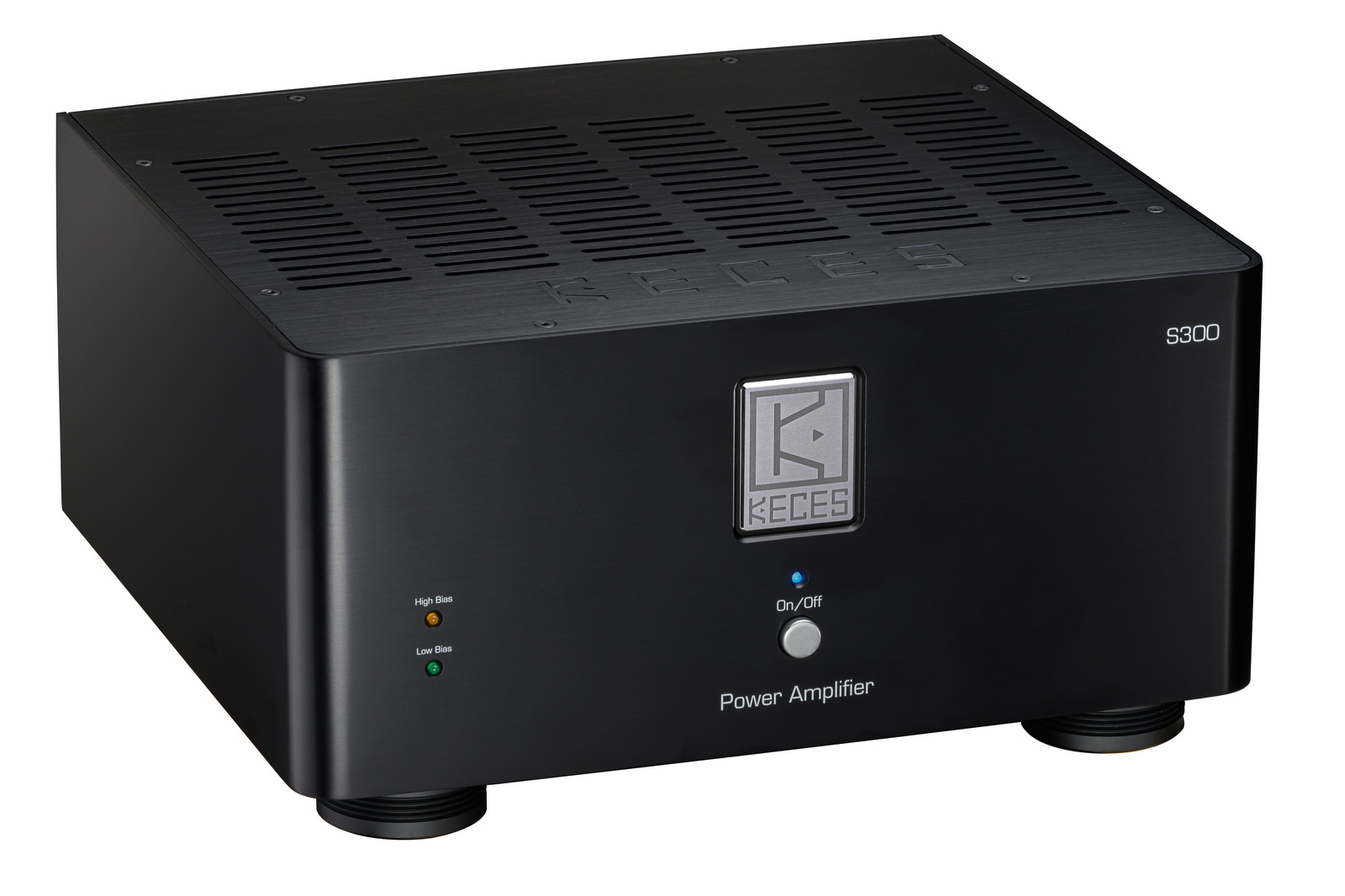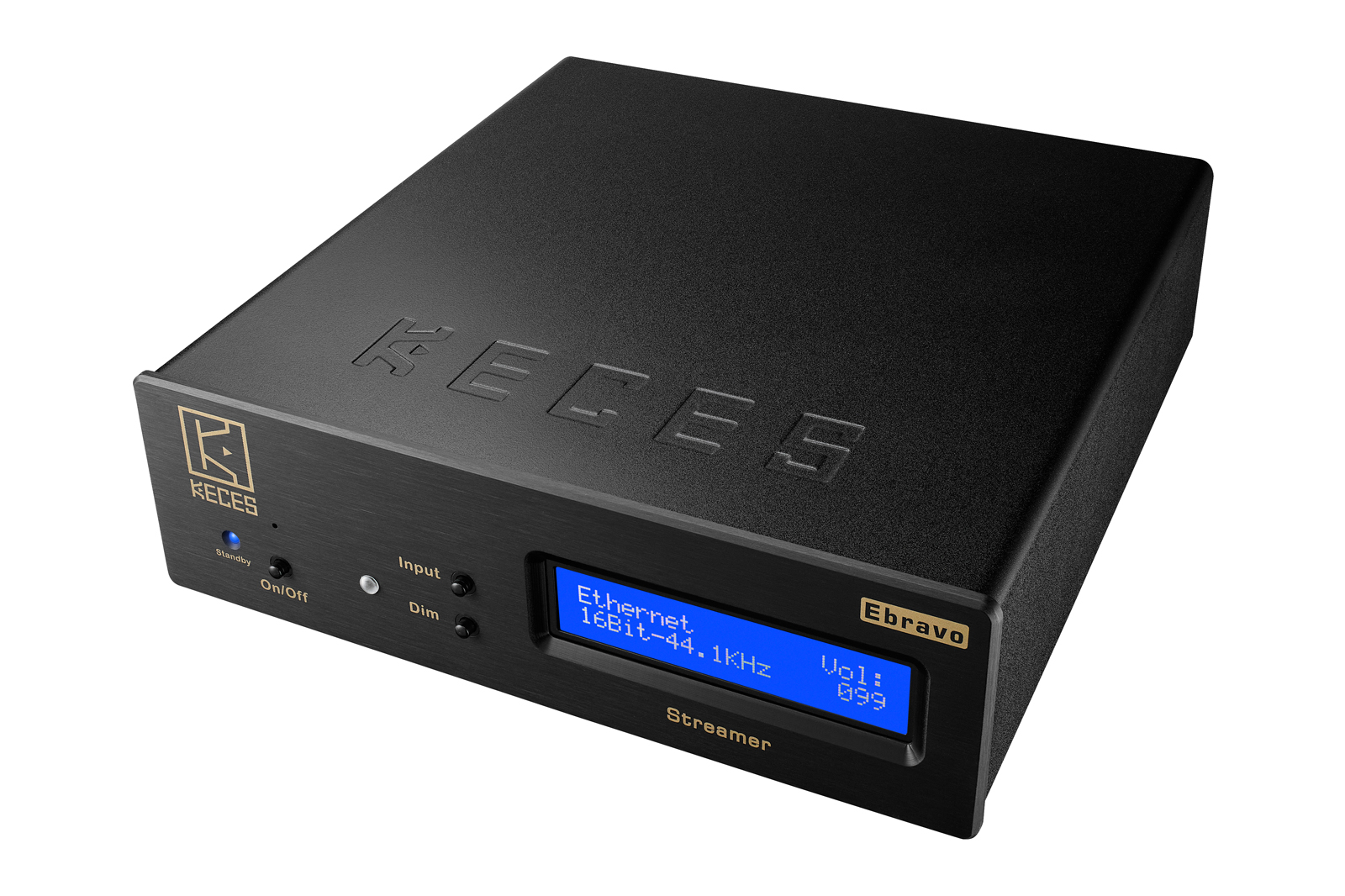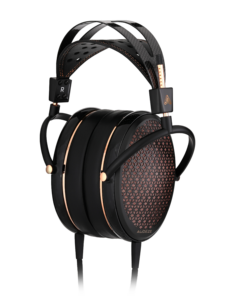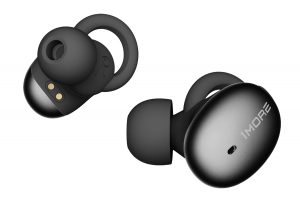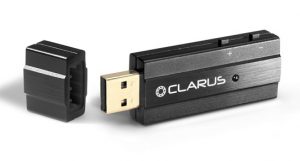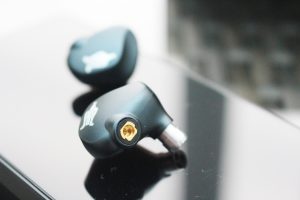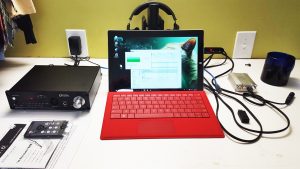
"Well, what'll it be, Dean? The fabulous tube phono stage behind curtain number one? Curtain number two's amazing boutique basket of USB mini DACs? Or the box Carol Merrill is standing beside, which may or may not contain the fabulous audiophile headphone and headphone amp collection set?"
"Tough choices, M. Hall, but thank goodness I've learned a thing or two and no longer have to play your three card Monty to avoid getting a big audio Zonk!"
The recent excavation of all things records and the ongoing spiritual quest of DAC enlightenment have produced no end of fun, affordable avenues for enjoying music. The world is filled with enticing vinyl reissues and DSD high res wonders trying to charm twenties out of our pockets, but that's nothing compared to the supercluster gravitational force pulling newcomers, manufacturers, and audio veterans alike to the [formerly] rarified world of premium headphones and amplifiers. Everyone is moving the feast of music out of the listening room and into the inner-ear sanctum. Following suit, I've been investigating the rewards of the Alpha Design Labs H118 Headphone and ADL X1 24/192 USB DAC Headphone Amplifier. The experience not only acquaints me with two excellent new audio products, but also spurs a thought or two about where the headphone hobby might be heading.

First things first, though, so how well do the H118s earn their $269 price point? The ADL H118 Headphone can be neatly summarized as great all-around headphones: Lively sound, articulate but not overwhelming bass, and comfortable fit––once the warm leatherette pads break in and your ears adjust to the unfamiliar triangular shape of the pads.
The ADL H118s may not have the sense of space and resolution of my Sony MDR 7520s, but they improve on the Sony's studio voicing by delivering a solid, unified musical experience that plays well with a broad range of musical styles. The ADL's are well balanced, both on your head and between your ears, which ought to make them widely desirable for wearing and for listening. They're no thrash machines, and probably won't be a good match for rabid followers of any genre following the word "Hardcore!" Still, the H118s have range enough to make substantial work of Daft Punk's percussive synthpop, "Motherboard," while also displaying the subtle midrange fluency necessary to convey the languid longing of Julia Holter's forlorn vocal in "He's Running Through My Eyes."
Fortunately, they also straight ahead rock when called upon, so be careful with the volume when blasting full-on burners like Humble Pie's Live at Filmore East classic, "I Don't Need No Doctor." Admittedly, my ears have been collateral damage to more than one battle of the bands, and I'm very selective when it comes to chair-standing, concert volume loudfests. For Peter Frampton's iconic guitar solos and Steve Marriott's incomparably raspy lead vocal, however, I couldn't help but make an exception. I sat back, turned it up, and allowed the ADL H118 and X1 amplifier to let it ride. Totally worth it, even though it will probably shorten my wait to become a member of the "W-w-what?" generation. "Qui audit, se a!" (listener beware) should be emblazoned on all headphones/amps like a surgeon general warning, but for those who are determined to crisp a few inner ear hair cells by rolling up the volume, the full and excellent sound of the ADL H118 should inspire some rebel yellers to keep it within the realm of reason. Finally, these headphones have an honest sound, with no tricks up their cables, so they're not for those who like cosmetic alterations in soundstage or tonal balance.
But don't take my word for it. Don't take anybody's word for it, for that matter.
Some reviewers find the H118s to be on the bright side; others hear them as warm and lush. I judge the ADL headphones to be forward and engaging but not abrasive, thanks to their high quality drivers. The discrepancy between the reviewers, it should be noted, exemplifies the reality that headphones are affordable and sound is subjective. Unlike loudspeakers, headphones are affordable enough for a global fan base to cultivate first-hand experience. Consequently, there are many more experts and casual listeners expressing a wide range of opinion. Ignoring or citing measurements as they please, the wash of wisdom usually results in a splendidly impressionistic portrait of a headphone's sound, place in the pecking order, and overall value. To further complicate matters, the headphone community is filled with super friendly acolytes eager to help you choose, buy, swap, modify, build, decorate, lively up, put out to stud, or self-actualize your headphones. The fervor of the support community is definitely one of the positive qualities of headphone listening. Just don't expect a definitive answer to the question, "Which is the best headphone to buy for $300?"
As an aside, as the consumer base expands and large corporations start to marshal their resources to produce products and advertising, it will be interesting to see if this close-knit group of headphone aficionados can maintain and expand their current camaraderie, much in the way Apple computer devotees have made room for those entering through the iDevice portal. The old question of where does the public hobby leave off and the private club begin certainly applies here. Right now, the prevailing theme seems to be the more the merrier. Moreover, money follows money, and it's not a reach to foresee a sharp increase in pricey status products in all areas of the headphone market. Will this development polarize the following that so cherishes headphones and headphone amplifiers' affordability, or will the community welcome the innovations and improvements that should result from the commitment of engineering hours and funding? Most likely, the largely young and international headphone audience couldn't give a damn about any of this, and would probably say that only the man worries about selling out to the man.
But I digress... The ADL H118s sacrifice a bit of highs and lows, but excel at delivering the heart of most music in a powerful, satisfying way. They're fairly easy to drive, and they sound perfectly fine with any of your iDevices (but perform much, much better when driven by the partnering X1 USB DAC headphone amplifier). Finally, they deliver a high dollar sound at the magic three bill cut-off price point. Here are some specs to give you more of an idea:
-
Acoustic Design: Dynamic closed-back
-
Driver: 40mm diameter special high-flux magnet
-
Sensitivity: 98dB SPL (1mW) at 1 KHz
-
Frequency response: 20Hz ~ 20kHz
-
Input Power: 200mW (Max.)
-
Rated Impedance: 68 ohm @ 1KHz
-
Ear pad: Leatherette
-
Head Band Pressure: 4.5 N Approx.
-
Connector: Nonmagnetic rhodium-plated stereo α (Alpha) mini-XLR socket
-
Weight: 245g (8.64oz) Approx. (without cable) 310g (10.93oz) Approx. (with cable)
If you're like most people, you don't require a toy chest filled with headphones to be happy, just one of high quality like the ADL H118. You do need, however, a really nice headphone amplifier to make it a onetime purchase.

Buying a nice pair of headphones like the H118s and not buying a separate headphone amplifier is like throwing a party with the music turned down low: still a good time, just not as much fun as it can be. Plugged straight into my Apple iPhone 5s, the H-D118 headphones give a fine performance, certainly miles above the spit-in-the-ear quality of standard ear buds. Connect the phone to the X1‘s iDevice Lightning input, however, and you'll recognize that the Alpha Design Labs X1 24/192 USB DAC Headphone Amplifier indisputably transforms the sound of the music in every appreciable aspect. Warmer, fuller, more defined and alive, you name it, the X1 delivers in spades and on the money. Playing files from my Macbook Pro, the sonic improvement is even more immediately apparent. Rich, powerful, and fully controlled bass punctuates Amon Tobin's hypnotic electronic music staple, "Easy Muffin." When paired with the H118s, the X1 has the muscle and finesse to easily bring the rhythm to the fore, leaving the swirling, textured coda to enjoy ample space and delicacy. Ma.Dita's enjoyable tune, "September," cleverly mimics the feel and sound of "Gold Finger" (the Bond theme, not the band). The X1 gives full expression to the new song's surefire combination of a strong female vocal supported in grand style by soaring horn arrangements, prominent bass, and melodic piano accents. Granted, there are any number of headphone amps out there able to buff up the H118s, so what separates the ADL X1 from the other ones on the market?
Although it's not a fitness product, the X1's aluminum and ABS plastic chassis gives it a more than sporting chance of surviving the jolts and unscheduled flights that occur when a small, wingless box is tethered to a mobile, distracted listener. The X1 charges via your computer's USB connection––or an AC/DC switching adapter sold separately––for up to seven hours, and its compact size enables you to put it in your travel bag and not have to worry about breaking tubes or searching for outlets. It handles up to 24-bit/192 kHz files (sampling rates are shown on the front panel LED indicator), and that should cover most of the music on your home computer. The X1 also accepts all but the most ancient Apple iDevices. Unfortunately, all files will be played at Apple's archaic 44.1kHz rate, but that's not ADL Furutech's fault. Continuing the X1's wide utility and applicability, connectivity with other headphones from 12-600 ohms should be no problem for the X1's analog line-level 4-pin 3.5mm input and 4-pin 3.5mm output. Here are the relevant specs for the X1:
-
High-performance 24-bit/192kHz XMOS USB and ESS-ES9023 DAC chip
-
DD Converter (3.5mm TOSLINK optical output)
-
Max headphone output at 1%THD @ 1KHz: 34mW(12 ohm), 60mW(16 ohm), 82mW(32 ohm), 86mW(56 ohm), 36mW(300 ohm), 19mW(600 ohm)
-
Channel separation 60~64dB (1KHz) 33ohms -50dB/<=±3dB
-
Frequency characteristics 20Hz ~20kHz (±0.5dB)
-
Total Harmonic Distortion 0.033% (33ohms) , <0.02% (300ohms) , 0.0085% (600ohms)/1mW
-
S/N Ratio 95.5dB/32ohms , 98.1dB/56ohms , 101.6dB/300ohms, 102.1dB/600ohms
-
Dimensions 68 (W) x 118 (D) x 16.5 (H) mm
-
Weight: 147g Approx.
Also helpful is the fact that you can use the X1's headphone/analog out to connect it to your home stereo, which can come in handy when your current DAC goes down, or if you just want a little variety. For example, my CEntrance DACport USB DAC imparts an enjoyable degree of resolution and bite, while my Peachtree iNova's DAC produces a broad, easy-on-the-ears rendition of digital files. The Alpha Design Labs X1 is cut from the same cloth as the Peachtree DAC, in that music has a polished, smooth sound which appeals to many listeners. The X1 trumps the Peachtree by producing better resolution and soundstage and a slightly sweeter tonal balance. The X1 may not have the CEntrance model's palpable texture, but it digs pretty well into the mix, as shown by the skillfully way it presents the guitar stew of acoustic bronze, electric fuzz, and gliding glass slide that flavors the Flaming Lips' quirky gem, "Brainville."
The sophisticated, evenhanded sound of the X1 makes it an excellent match for the H118s, of course, but it should also be a good option for a wide variety of headphones and listener preferences. Like the ADL H118 and the ADL GT 40 USB DAC reviewed here previously, the X1 USB DAC Headphone Amplifier doesn't do a thing wrong, and does many things very well, indeed. Great sound and solid value make both the ADL H118 headphones and X1 DAC headphone amplifier fine choices for the headphone enthusiast, especially when purchased as a pair.
Alpha Design Labs H118 Headphone
Retail $269
Alpha Design Labs X1 24/192 USB DAC Headphone Amplifier
Retail $479




